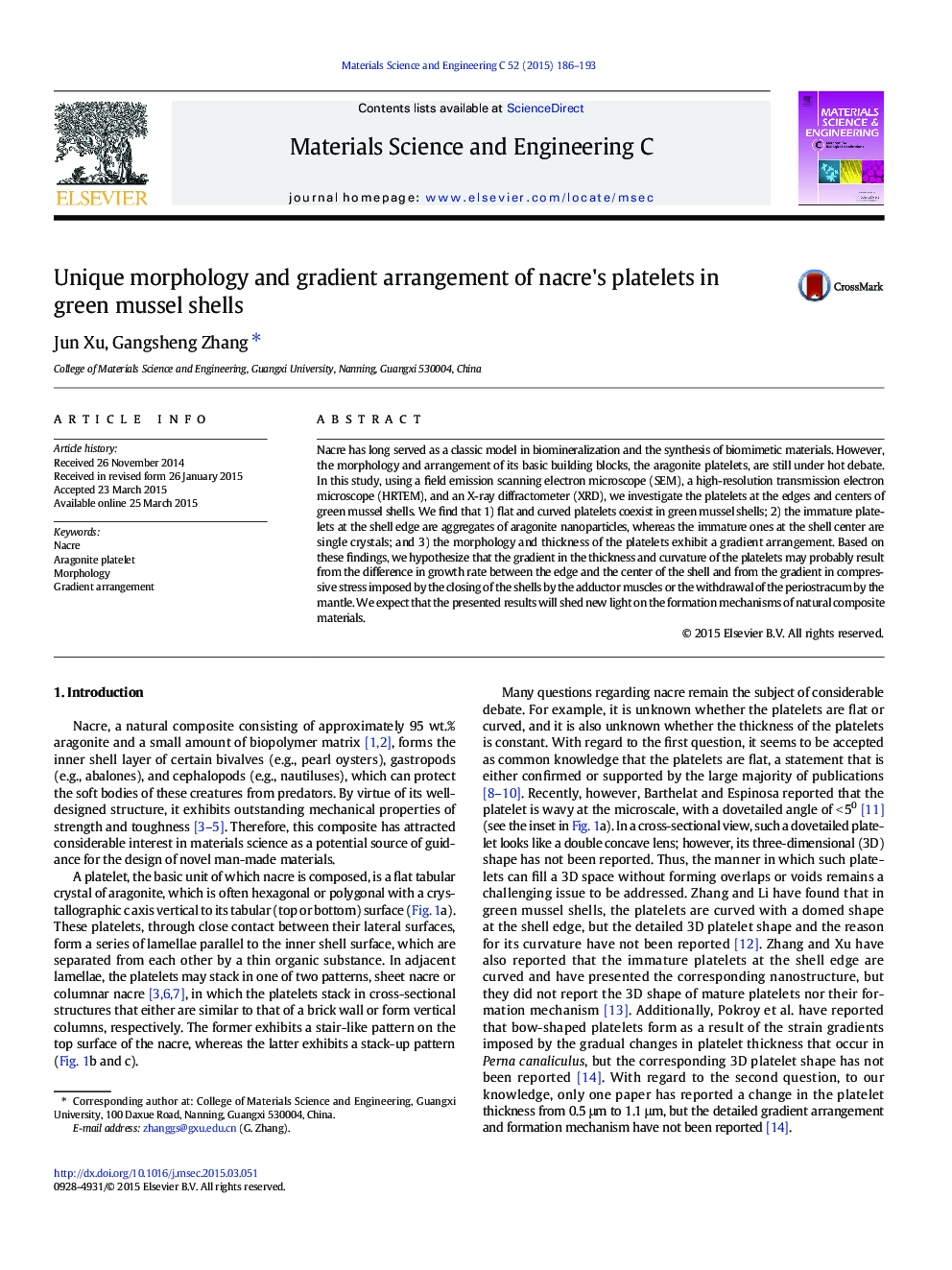| Article ID | Journal | Published Year | Pages | File Type |
|---|---|---|---|---|
| 7869510 | Materials Science and Engineering: C | 2015 | 8 Pages |
Abstract
Nacre has long served as a classic model in biomineralization and the synthesis of biomimetic materials. However, the morphology and arrangement of its basic building blocks, the aragonite platelets, are still under hot debate. In this study, using a field emission scanning electron microscope (SEM), a high-resolution transmission electron microscope (HRTEM), and an X-ray diffractometer (XRD), we investigate the platelets at the edges and centers of green mussel shells. We find that 1) flat and curved platelets coexist in green mussel shells; 2) the immature platelets at the shell edge are aggregates of aragonite nanoparticles, whereas the immature ones at the shell center are single crystals; and 3) the morphology and thickness of the platelets exhibit a gradient arrangement. Based on these findings, we hypothesize that the gradient in the thickness and curvature of the platelets may probably result from the difference in growth rate between the edge and the center of the shell and from the gradient in compressive stress imposed by the closing of the shells by the adductor muscles or the withdrawal of the periostracum by the mantle. We expect that the presented results will shed new light on the formation mechanisms of natural composite materials.
Keywords
Related Topics
Physical Sciences and Engineering
Materials Science
Biomaterials
Authors
Jun Xu, Gangsheng Zhang,
